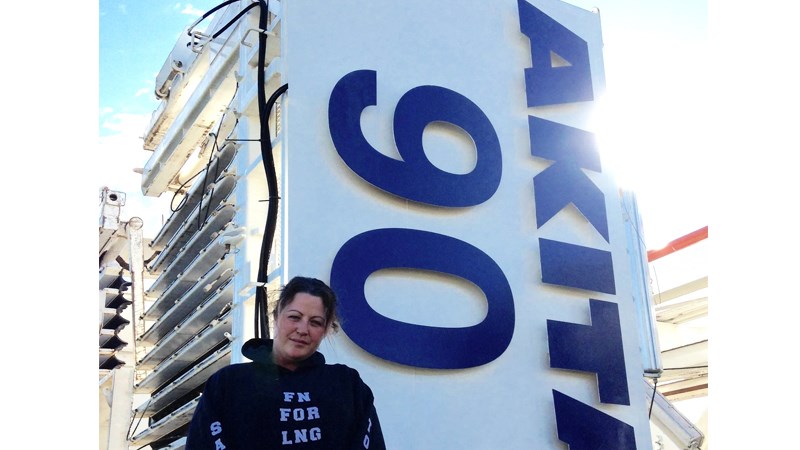Just weeks before the federal government is to announce a decision on a $36 billion liquefied natural gas (LNG) plant in northwest B.C. a major player has invested heavily in northern gas pipelines.
Coincidence?
Many in the north are praying it is not.
They hope that the $37 billion takeover of pipeliner Spectra Energy by Calgary-based Enbridge, combined with the start of a $715 million gas plant at Fort St. John, signal that the long-awaited LNG bonanza could finally be stirring.
Art Jarvis, executive director of Energy Services BC, said the merger and new construction could be signs of a recovery for the north’s hammered economy.
“Lord, I hope so,” said Jarvis, “Because we are in peril here in northeast B.C. There are still companies closing their doors and there is tons of equipment sitting idle.”
Sean Thomas, an accountant and president of the Fort St. John Petroleum Association, said hundreds of trucks, drill rigs and other equipment are parked in and around the city. “Guys are pulling the plates and cancelling leases,” Thomas said, noting there has been an exodus of contractors from Alberta and the Lower Mainland.
The number of gas wells drilled in northern B.C. plunged from 700 in 2014 to 520 in 2015. So far this year, 200 drill rigs are working, primarily in the northeast gas fields near Fort St. John and Dawson Creek. Jarvis said local contractors do not expect an increase in drilling during the normally busier winter season.
“We are not excited about the next two quarters,” he said.
That could all change, of course, if Malaysia-based Petroliam Nasional Bhd(Petronas)decides to proceed with its Pacific NorthWest LNGexport terminal near Prince Rupert, a multibillion-dollar facility that would be fed by pipelines from the northeast gas fields.
The Petronas bid hinges on sign off by the Canadian Environmental Assessment Agency(CEAA), which has studying the project since April 2013.
The federal government intends to make a final decision on the project by October 2, according to an statement emailed to BIV from CEEA,
“The Agency is working to finalize the Environmental Assessment (EA) Report and potential environmental assessment conditions that would apply should the project be ultimately authorized to proceed, taking into account the information provided by the proponent and over 34,000 comments received from the public,” the email reads.
Gas field contractor Kristi Leer helped start Fort Nelson for LNG, an advocacy group to push the town’s case to federal leaders. Her company, Kleer Enterprises, has had to lay off employees as they await the government decision.
“In 14 days, everything could turn,” Leer said September 6. “It’s sleepless nights. We’re all sitting and wondering what we’re going to do. What if they say no? What if they say yes?”
Petronas, however, is in trouble that an environmental clearance may not solve. Malaysia’s state oil company said profit dropped 96 per cent in the second quarter, compared to a year earlier, due to the plunge in oil and gas prices.
Thomas said that, even if Petronas decided to proceed, it would likely call for a retendering of every contract in a bid to lower prices. “A lot has changed up here since 2013,” he said.
Both Jarvis and Thomas, while cheered by the start this year of the Tower Gas processing plant at Fort St. John this year, say most of the constriction workers are being flown in from Alberta.
The facility, by Verasen Inc. and the Cutbank Ridge Partnership –a partnership between Encana Corp. and Cutbank Dawson Gas Resources Ltd., a subsidiary of Mitsubishi Corp. – is one of B.C.’s largest construction projects. It will have the capacity to produce 200 million cubic feet per day of rich gas and up to 20,000 barrels per day of condensate and natural gas liquids. The plant is expected to be in service in late 2017.
The plant will likely tie into the company's 3,000-kilometre Alliance pipeline, which delivers natural gas and natural gas liquids to markets in the Midwest United States.
For the bulk of northeast BC gas field contractors and suppliers, however, the future hinges on a landmark decision by the Trudeau government, which is facing pressure from environmental groups that claim the Petronas project is not in keeping with Canada's climate commitments.
- with files from Alaska Highway News



